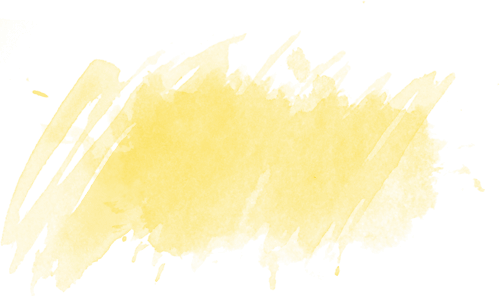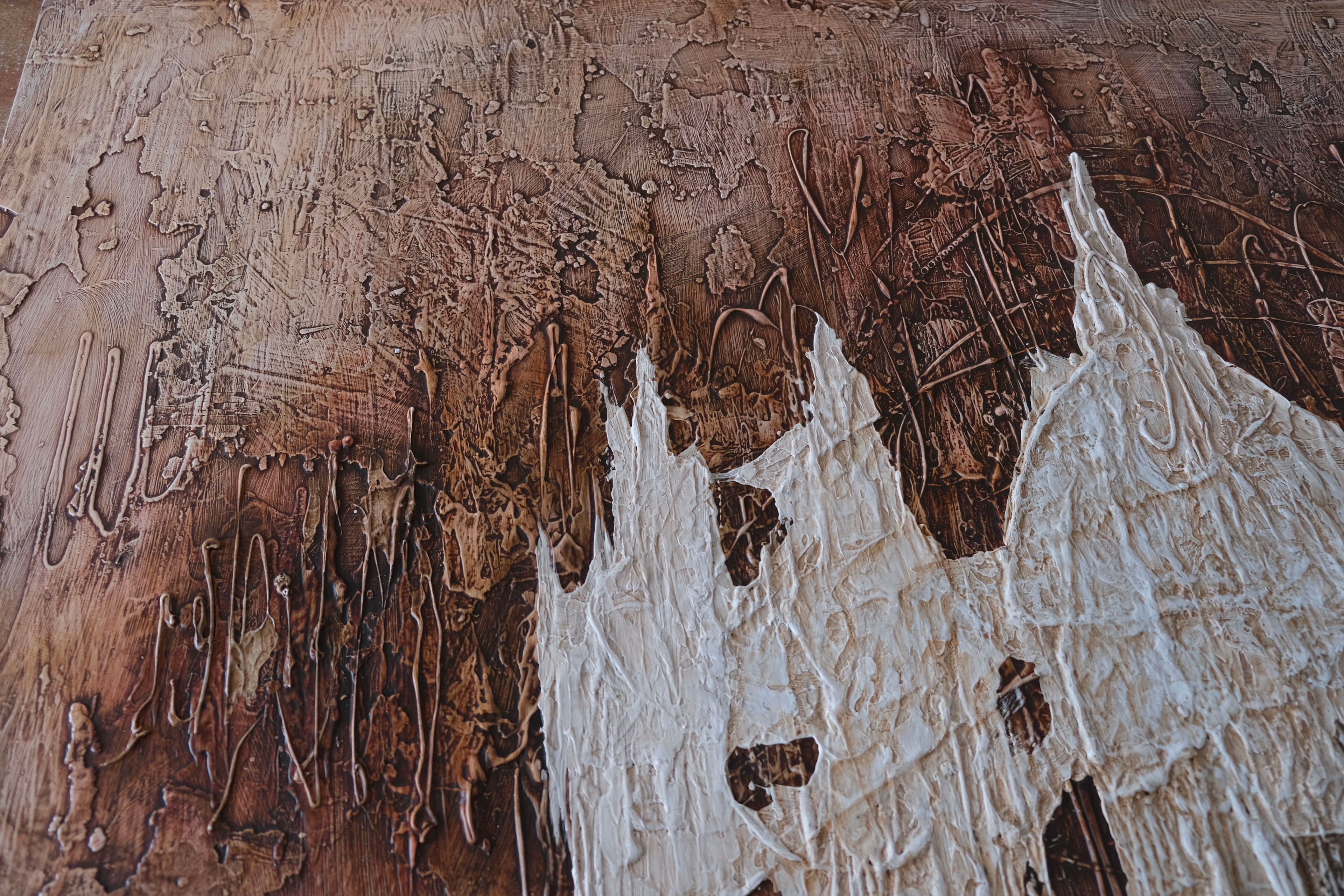
Interview with Efe Sembol: Stepping into the painting to comprehend abstract art
- Jul 26, 2022
- Art, Interviews
- 8 min read
Have you ever thought about why abstract painting is considered by many to be incomprehensible? Shapes we cannot make sense of, paint that drips down almost accidentally, intertwining of different colors, different textures, and thick layers of paint that feel almost three-dimensional.
So how we can appreciate abstract art? The answer is, you must enter the painting and see where it takes you. There is no right or wrong interpretation of abstract art. Instead of trying to understand what the shapes in the painting look like, we should let our eyes wander all over the painting without expectations.
I thought that prejudices against abstract painting often come from the difficulty in interpreting them, most of the visual content we consume often has a precise meaning and conveys a message to the target audience. However, abstract painting is open to interpretation and does not contain clear messages. Abstract art engages with our emotions and provides a different visual experience to the audience.
A few years ago, I’ve met with the artist Efe Sembol, and recently I had a chance to interview him. During our conversation, one of the things that made me think deeper was the artist’s opposition to the verbal expression of abstract painting.
I’ve thought that the art and the artist are always concerned about conveying a message, which is the opposite from Sembol’s approach to abstract painting. He addresses abstract painting as a form of visual experience. His approach changed my way of observing abstract art.
In his paintings, Efe Sembol uses the elements of nature that we are familiar with and offers us a passage to take a stroll into unconscious natures, which we are unfamiliar with. His paintings are almost a portal, a door opening to unconsciousness.
Archetypes and the collective unconsciousness
In his paintings, Sembol places the collective unconsciousness and archetypes in a prominent position. So, what are these two concepts all about?
We can see the archetypes as ancient behavioral patterns that occurred in different cultures early on. Jung claims that the deepest unconscious mind (collective unconscious) of humanity is inherited and expressed through archetypes. For instance, stories from different religions and mythological characters from different ancient cultures are almost the same. Even though all these cultures had common stories, characters, and symbols, they didn’t have much physical connection back then.
Therefore, Jung suggests that archetypes constitute the core structures of the collective unconscious of humanity. He draws attention to the fact that archetypes are universal therefore they evoke similar emotions in every human being.
According to artist, in the modern world, the way of thinking falls apart from all the things Jung claimed. We lost connection with our collective mind; we are not familiar with all these patterns anymore. Sembol believes that deep down we still feel something when we see them. The artist wants to remind us about this in an abstract way.
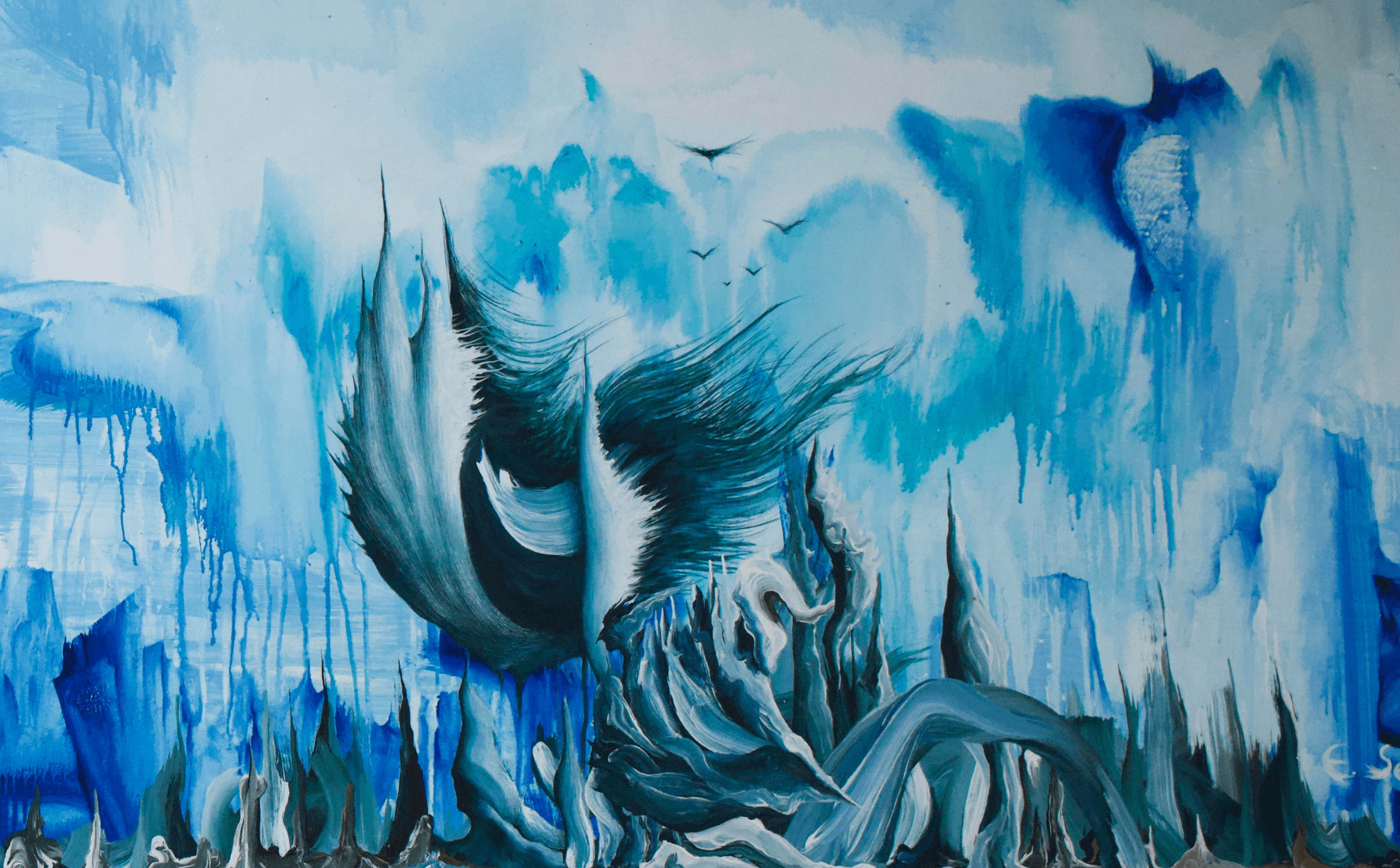
“I see myself as a transparent intermediary”
Sembol brings the unconscious elements and archetypes to a perceptual dimension, in a way that the audience can grasp better. Sembol describes this nature as a secondary nature rather than a perceptual nature. He adds: "Unconscious nature is the place where all the truth, the reality and the real process of how our thoughts are without a filter of language.’’
The artist highlights the method he uses to make the abstractions in his paintings. He says that he puts himself in a position of an intermediary and indicates that he paints in a pensive moment without any prior idea. He continuous: “I am an intermediary between two worlds, conscious and unconscious. I don’t have any prior idea of what I will paint, I just try to catch some elements from an unconscious nature and bring them to the perceptual dimension.’’
The artist conveys that he especially wants to stay away from ideas and thoughts during the creation of his paintings. He says: “We can always get somewhere with our thoughts and ideas or we might think that we have reached somewhere. Our thoughts can jump from one idea to another, our ideas can change sizes and shapes, but in fact, we can’t leave from our center, we can only spin where we already are.”
“Paintings make themselves by using the artist as a medium!"
Sembol points out that archetypes and symbols are the expressions of primitiveness and the first examples of the human subconscious which is suppressed in the modern world. The artist makes reference to techniques of the surrealist painters, he says “Surrealists were using the automatism technique to obtain textures. With this method, they draw sketches in the dark with the charcoal drawing technique. They used this technique to bring unconscious symbols to the surface of their paintings. According to Jung, these symbols and archetypes that the surrealists wanted to bring into their paintings were the perceptions and comprehension forms that existed even before consciousness, in this sense archetypes are also interpreted as thoughts of God.”
Sembol says that the first examples of archetypes are cave paintings. These symbols drawn on the cave walls are in a place that modern people have forgotten and cannot relocate in their lives anymore. Artist reveals the motivation behind his paintings as follows: "I try to bring archetypes to the surface in my paintings. These symbols are the symbols that remind people of their own primitiveness and evoke the essence of humanity”
The artist points out that “While abstract painters sails in the unconscious world, in order to objectify irrational elements that appear accidentally in their paintings, painters should not try to find a meaning of these unconscious elements, instead they should paint them how it comes naturally.” Sembol, also adds “instead of rationalizing the unconscious elements that artists bring to the surface of their paintings, if they support irrational nature of these elements then these elements will reveal themselves, therefore paintings make themselves by using the artist as a medium.”
Mental body reflected in artist’s color palette
The artist emphasizes the dark colors of deep natures. He uses dark colors to express the intensity of emotions. “I use bold transitions. Dark browns, aged whites, texture effects, and black backgrounds …”
Sembol says that what he tries to reveal spontaneously in his paintings is the mental body. We can perceive the mental body as the existence of our thoughts. When it comes to our thoughts, there are shapes of our thoughts before the verbal expression. These bodies can be seen as energy or abstract being.
He describes the mental body by referencing the concept of the noumenon in Kantian philosophy which means, the real essence behind the image of the object. Sembol manifests the darkness in his paintings as follows: “The spirit of the depth is open to whom can see the nobility of darkness.”
“If you are looking at the abstract artwork and trying to decode it, you are making a mistake.” Sembol indicates that there is nothing the viewer needs to decode, especially in his paintings. But he still thinks that many others might not agree on that. The artist says if the audience comes to the exhibition and asks what this artist tries to tell us with his artwork, his response would be: “If I wanted to say something, I would publish a book or write an article and put it here.’’
He underlines that his artwork is open to intuition and association therefore whoever comes to his exhibitions should only come to feel and experience his artwork. “I can say that my paintings are passages which open a door for communications between the people and their subconsciousness.’’
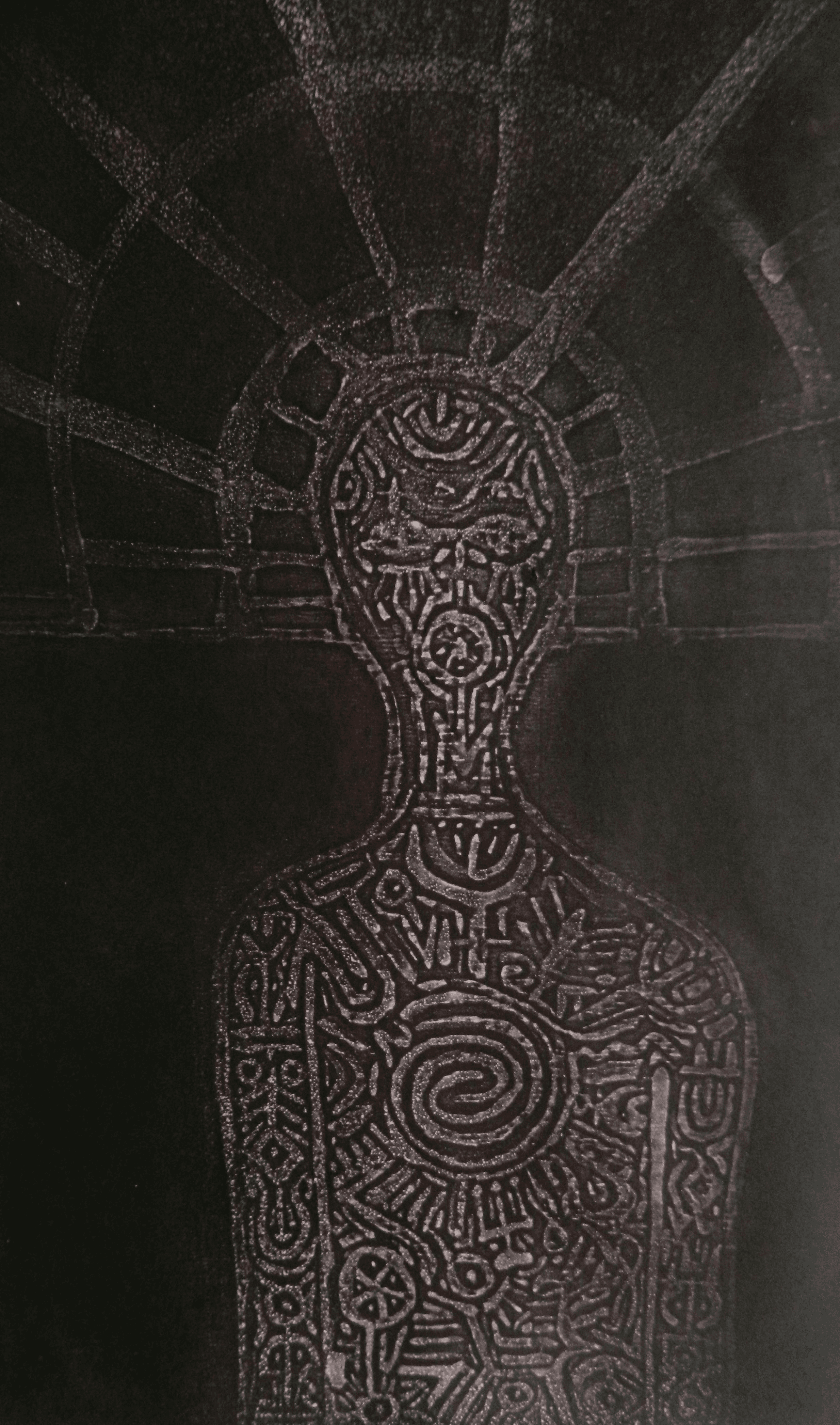
Shaman’s dream
In this painting, the artist gives reference to God as the scene illustrates, on the body’s head there is a halo that symbolizes God. Sembol directs attention to symbols depicted inside the body. These symbols are tamga’s (signs-stamps) which belong to the belief of Tengrism. The artist explains how the relations and communication between these symbols are established spontaneously in his paintings.
“Imagine entering a child’s play circle, inside that circle, you become independent of external reality. I play with these symbols as a child plays with his/her toys in his/her playground. It is necessary to know how to play with the symbols in order to achieve that. I have to step out from the context of reality by eliminating myself from the external reality. Therefore, I can play with the symbols and depict them by adapting to the specific “reality” within the game circle.’’
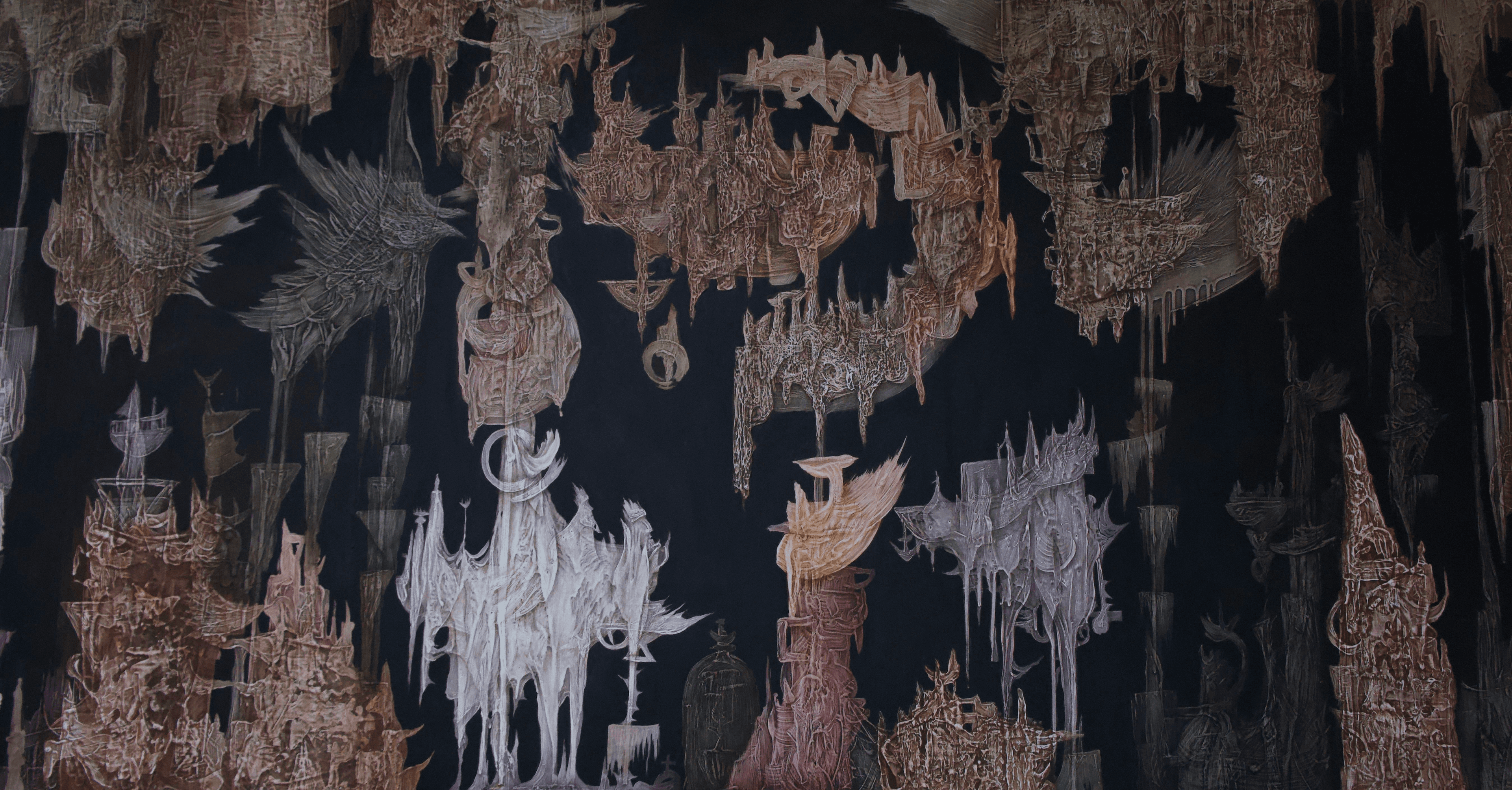
Fauna et flora
In this painting, the artist points out that just like nature has its own fauna, the thoughts that people have in their spiritual natures can also be considered as fauna. The artist says that elements of this fauna cannot be perceived with the five senses, intuition is a key point to perceive the paintings of the artist.
Sembol uses the automatism technique in order to bring abstract elements to his paintings. The artist reveals the creation process of this painting as follows: “I draw in the dark with the charcoal drawing technique in order to paint some textures on the canvas then I leave it to sit for a while, after that when I see the canvas again, I try to see what feelings these textures evoke in me after that I keep painting until the paintings take their final shape.‘’
Sembol summarizes: “In this painting, my intention was, being able to build the communication and harmony between the mental bodies. The pleasure of harmony and aesthetics, which is emerging between mental bodies are very different from the pleasure that can be experienced in any painting that is normally considered to be beautiful or ugly. Another intention of this painting was, enabling the audience to find their own existence in the painting, let them take a step into the painting and enjoy the authentic aesthetics of this place.”
